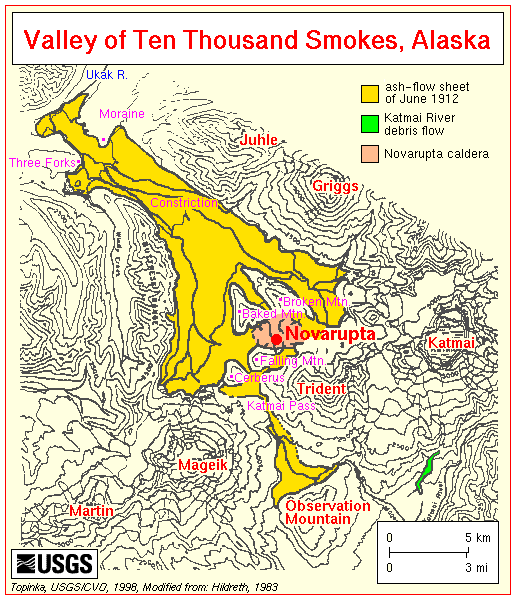|
As mentioned earlier, this was the biggest eruption of any volcano in the 20th century. The eruption spanned three days from June 6th to the 8th and lasted 60 hours total (avo.alaska.edu). The eruption actually took place at a vent located 10 kilometers west of Mount Katmai called the Novarupta dome. However, scientists suggest that the magma that erupted drained out from beneath Mount Katmai, using a sort of plumbing system beneath Trident Volcano (avo.alaska.edu). As a result of this magma draining the caldera now seen atop the volcano formed. After the eruption was over, a small cinder cone formed on the floor of the caldera (avo.alaska.com). The eruption itself spewed out more than seven cubic miles of ash, which covered 46,000 square miles of land. The eruption caused pyroclastic flows, which are lateral flows of a turbulent mixture of hot gases and unsorted pyroclastic material (volcanic fragments, crystals, ash, pumice, and glass shards) that can move at speeds up to 50-100 mph (Rowland). These pyroclastic flows that came out traveled 15 miles, filling a valley next to the volcano to produce the Valley of Ten Thousand Smokes; named by Robert Fiske Griggs. Griggs was the first to reach the volcano in 1916 while leading a National Geographic expedition. When they reached the valley they saw thousands of gaseous steam vents called fumaroles, so he called the area the Valley of Ten Thousand Smokes (USGS Infobank). Other than this massive eruption, Mount Katmai has been quiet with no other recorded eruptions, but I would say that the one eruption it did have more than makes up for it. Just how massive was this eruption? Check out the VEI.

|

